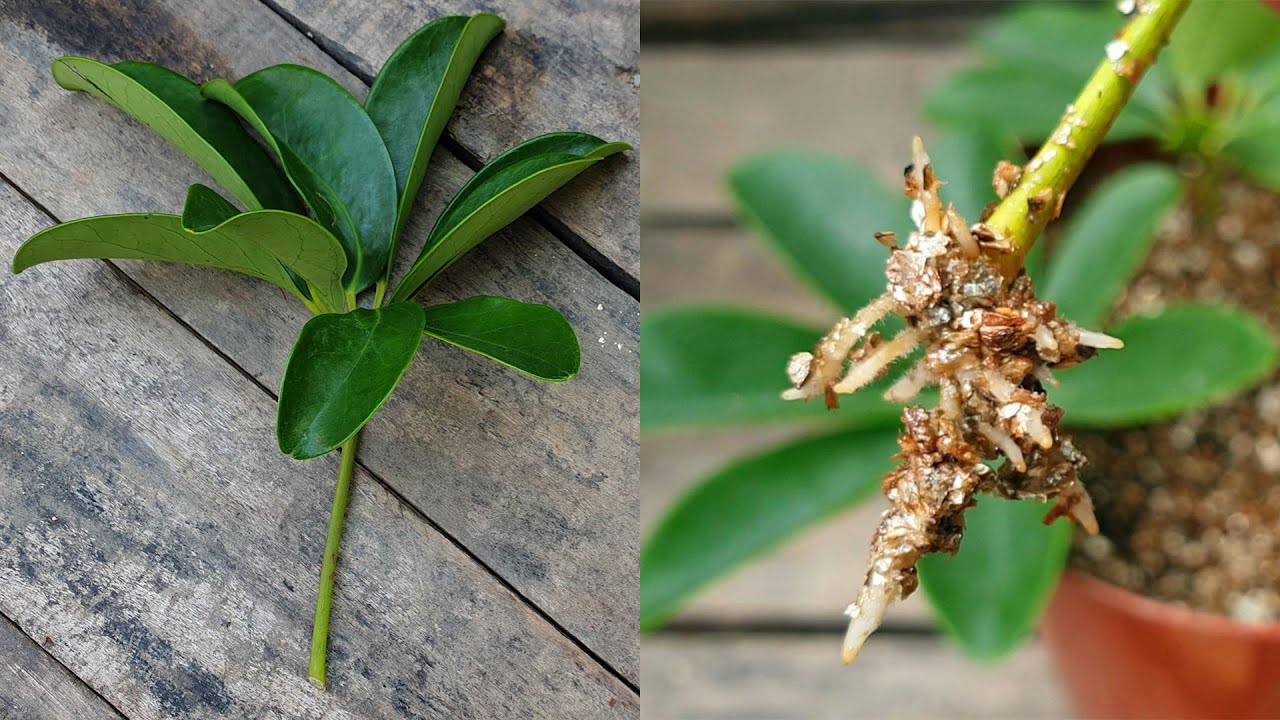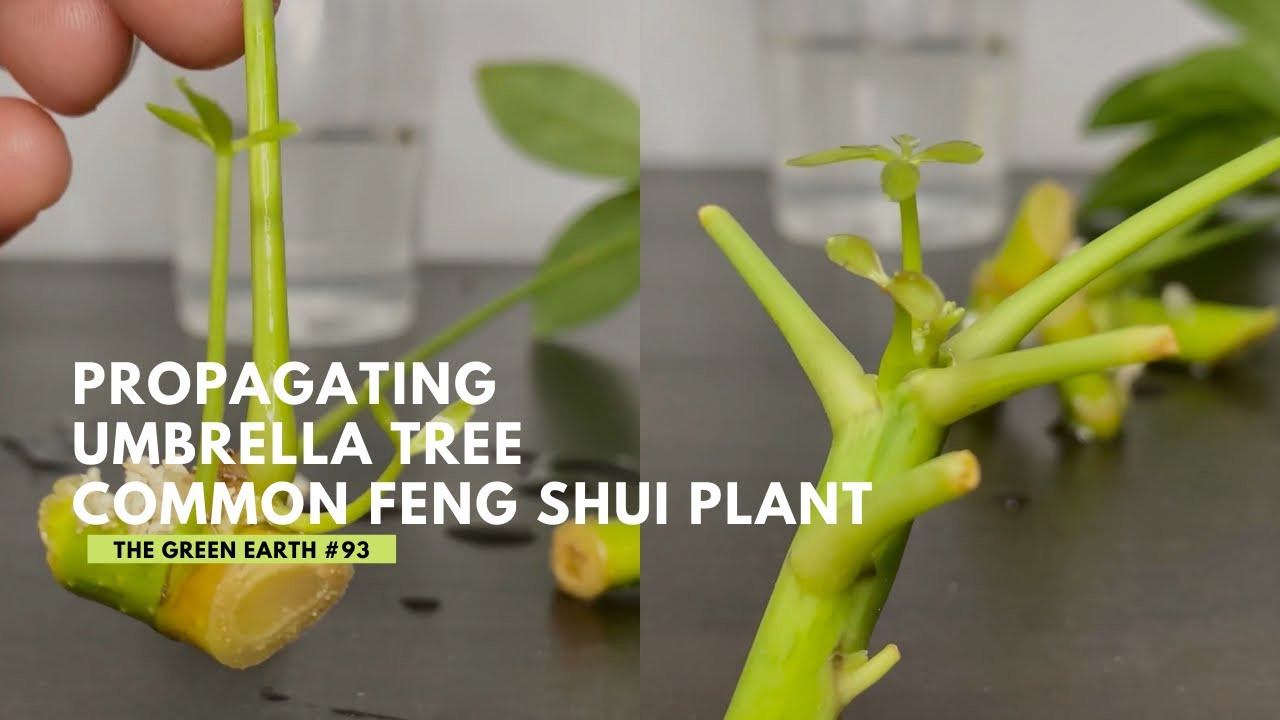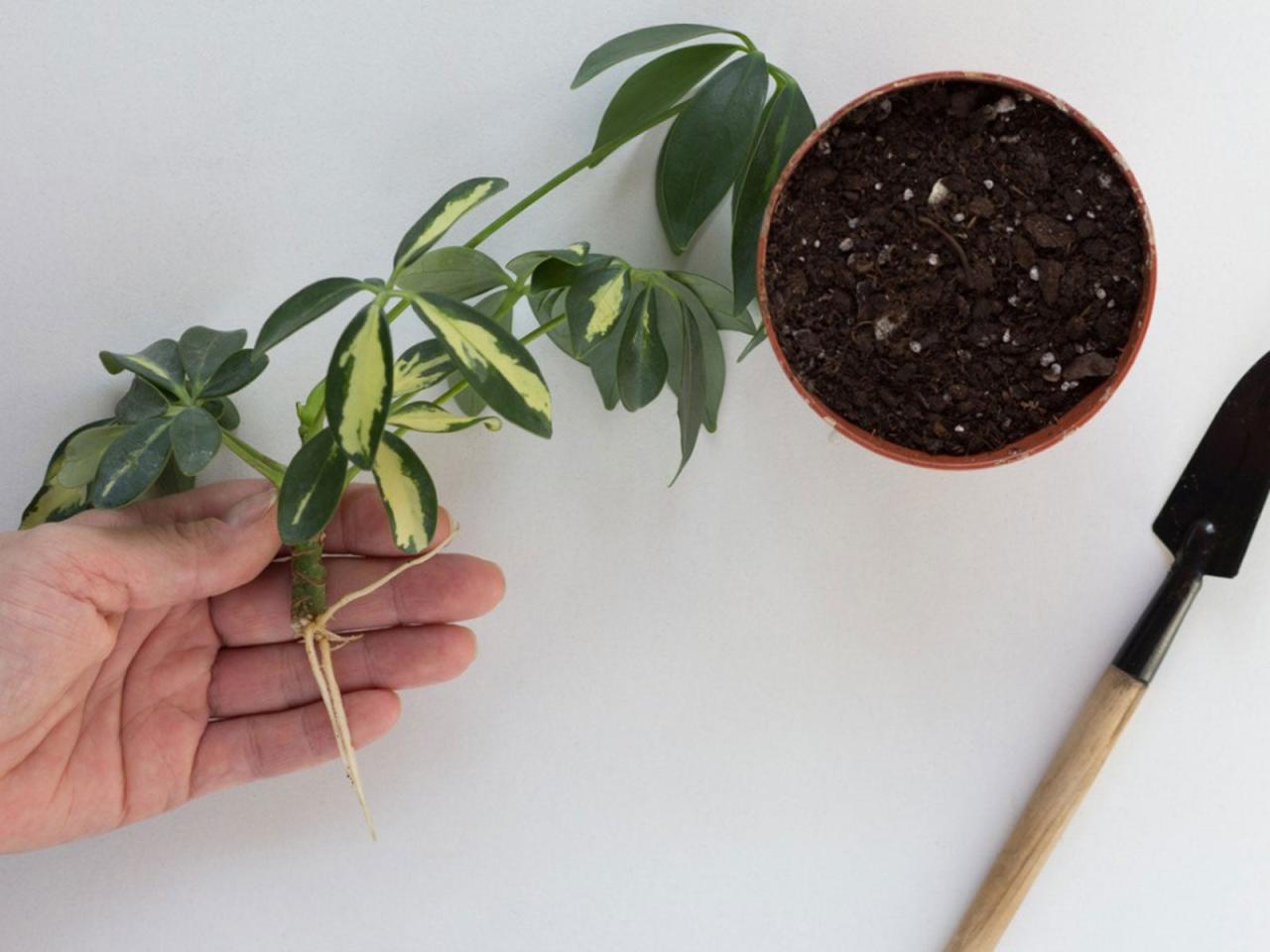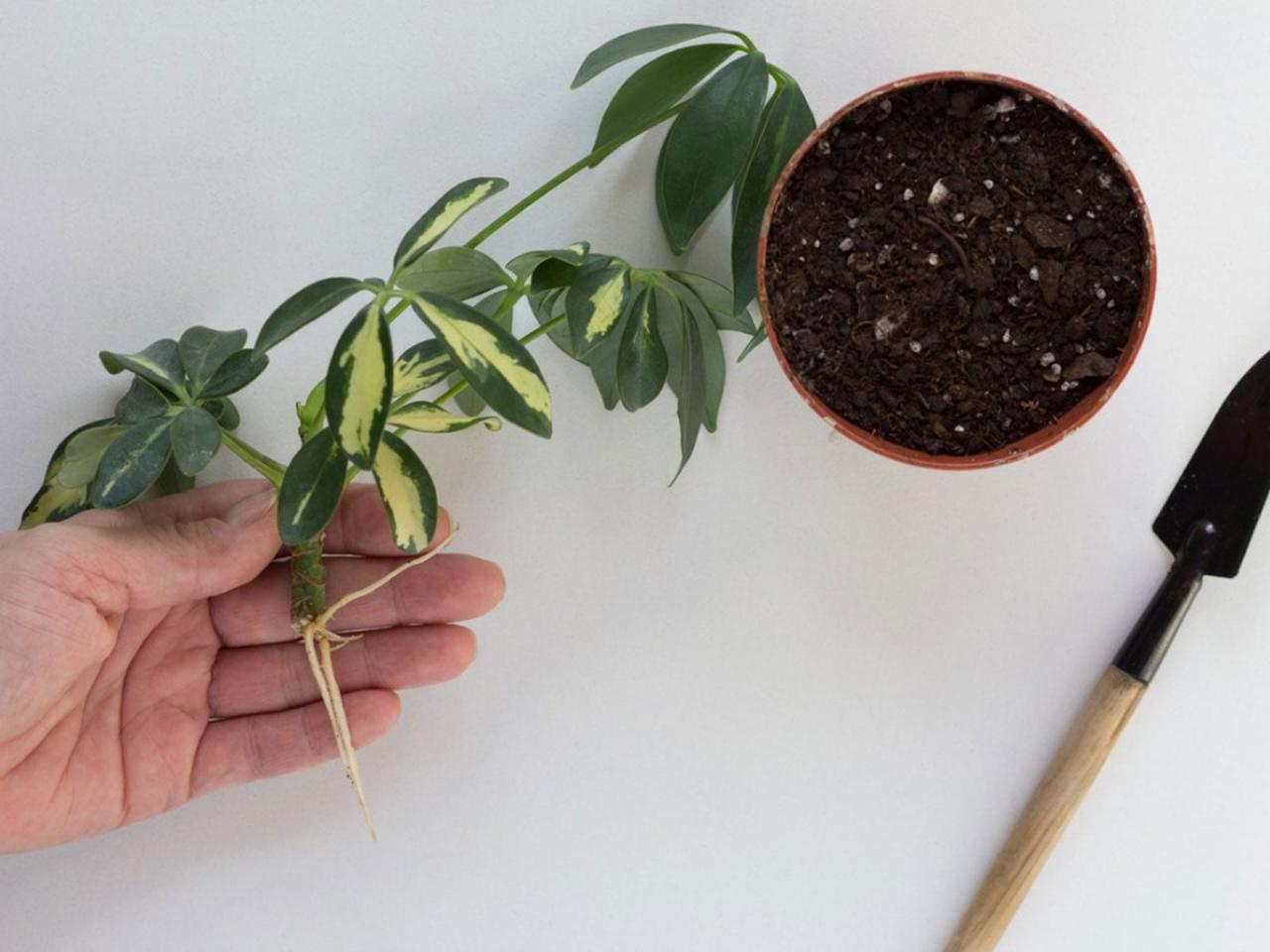Expert Tips for Growing Schefflera Plants from Cuttings Successfully: Schefflera plants, with their lush foliage and adaptability, are a popular choice for both indoor and outdoor settings. Propagation through cuttings offers a simple and rewarding method to expand your Schefflera collection or share these beautiful plants with others.
This guide provides a comprehensive roadmap to successfully grow Schefflera plants from cuttings, covering everything from selecting the right cuttings to nurturing them into thriving plants.
From understanding the ideal timing for taking cuttings to preparing the perfect rooting environment, this guide equips you with the knowledge and techniques needed for successful Schefflera propagation. Whether you’re a seasoned gardener or a beginner, these expert tips will help you navigate the process with confidence and ensure your cuttings develop into healthy, vibrant plants.
Understanding Schefflera Propagation

Propagating Schefflera plants from cuttings is a rewarding and cost-effective way to expand your collection or share these beautiful plants with others. This method allows you to create new plants that are genetically identical to the parent plant, preserving its unique characteristics.
Types of Cuttings Suitable for Schefflera Propagation
Schefflera propagation is typically done using stem cuttings. These cuttings are sections of the plant’s stems that contain nodes, which are the points where leaves and roots develop. Stem cuttings are the most common and successful method for propagating Schefflera plants.
Selecting Healthy Cuttings from a Parent Plant
Choosing the right cuttings is crucial for successful Schefflera propagation. Here’s a step-by-step guide:
- Identify Healthy Stems:Select stems from a healthy, vigorous Schefflera plant that are free of diseases or pests. The stems should be firm and have a good color, indicating their health.
- Locate Nodes:The stem cuttings should have at least two or three nodes. These nodes are the points where roots and leaves will emerge.
- Cut Below a Node:Using a sharp, clean knife or pruning shears, make a clean cut just below a node. This will encourage root development at that point.
- Remove Lower Leaves:Remove any leaves below the lowest node on the cutting. This helps to prevent rot and focuses the plant’s energy on root development.
- Prepare the Cuttings:Once the cuttings are prepared, they are ready for rooting.
Preparing Cuttings for Success
Preparing Schefflera cuttings for successful propagation involves selecting the right time, making clean cuts, and treating the cuttings with rooting hormone. By following these steps, you can significantly increase the chances of your cuttings developing healthy roots and thriving into new plants.
Timing for Taking Cuttings
The ideal time for taking Schefflera cuttings is during the plant’s active growing season, typically from spring to early summer. During this period, the plant is actively producing new growth, and the cuttings will have a higher success rate of rooting.
Avoid taking cuttings during the winter months when the plant is dormant, as the cuttings may be less likely to root successfully.
Preparing the Cuttings
- Select Healthy Stems:Choose healthy, non-flowering stems from the Schefflera plant. Look for stems that are firm, green, and free of disease or pests. Avoid stems that are too woody or too thin.
- Make Clean Cuts:Use a sharp, clean knife or pruning shears to make a clean, angled cut just below a node (the point where a leaf grows from the stem). This angled cut will help to maximize the surface area for root development.
- Remove Lower Leaves:Remove the lower leaves from the cutting, leaving only the top two or three leaves. This will help to reduce water loss and focus the plant’s energy on root development.
Treating Cuttings with Rooting Hormone
Rooting hormone is a powdered or liquid substance that helps to stimulate root growth in cuttings. While not always necessary, using rooting hormone can significantly improve the chances of successful propagation.
- Dip the Cuttings:Dip the cut end of each cutting into the rooting hormone powder or solution. Ensure that the hormone is evenly distributed on the cut surface.
- Avoid Over-Application:Be careful not to over-apply the rooting hormone, as this can inhibit root development. Follow the instructions on the rooting hormone product for the correct application rate.
Creating the Perfect Rooting Environment

A crucial aspect of successfully propagating Schefflera from cuttings is providing an optimal rooting environment. This involves selecting the right rooting medium and ensuring appropriate humidity and temperature conditions.
Rooting Mediums
The rooting medium plays a significant role in the success of Schefflera propagation. It needs to provide adequate moisture retention, aeration, and support for the developing roots. Here’s a comparison of popular rooting mediums for Schefflera cuttings:
Rooting Medium |
Pros |
Cons |
|---|---|---|
Perlite |
Excellent drainage, lightweight, sterile, inexpensive |
Can dry out quickly, may need frequent watering |
Vermiculite |
Good moisture retention, airy, sterile |
Can become compacted, may need additional drainage |
Coco Coir |
Excellent moisture retention, good drainage, sustainable |
Can be slightly acidic, may need pH adjustment |
Peat Moss |
Good moisture retention, acidic, widely available |
Can become compacted, can be environmentally unsustainable |
Seed Starting Mix |
Balanced blend of ingredients, suitable for most cuttings |
May vary in quality, may not be sterile |
Creating a Suitable Rooting Environment, Expert Tips for Growing Schefflera Plants from Cuttings Successfully
The ideal rooting environment for Schefflera cuttings is warm, humid, and well-ventilated. This can be achieved using various techniques:
Humidity Control
Propagating Dome or Plastic Bag
A clear plastic dome or bag creates a humid environment by trapping moisture around the cuttings. This helps to prevent excessive water loss and encourages root development.
Misting
Regularly misting the cuttings with water can help maintain high humidity levels.
Expert Tips for Growing Schefflera Plants from Cuttings Successfully will guide you through the process of creating new plants from cuttings. One of the most important steps is to choose healthy cuttings and prepare them properly for rooting. If you’re looking for an even easier propagation method, consider Mother of Thousands.
These plants readily reproduce from their leaves, making propagation a breeze. For a detailed guide on this method, check out Step-by-Step Instructions for Propagating Mother of Thousands at Home. Once you’ve mastered these techniques, you can apply similar principles to growing Schefflera plants from cuttings.
Water Tray
Placing a tray filled with water near the cuttings can increase humidity by promoting evaporation.
Temperature Control
Warm Location
Schefflera cuttings root best in warm temperatures, ideally between 70-75°F (21-24°C). A sunny windowsill or a heated propagator can provide the necessary warmth.
Heating Mat
A heating mat placed underneath the rooting container can maintain a consistent temperature for optimal root growth.
Rooting Methods
Several methods can be used to root Schefflera cuttings, each with its own advantages and disadvantages:
Rooting Method |
Pros |
Cons |
|---|---|---|
Water Propagation |
Simple, inexpensive, easy to monitor root development |
Cuttings may become rootbound, increased risk of rot |
Soil Propagation |
Provides a more stable rooting environment, encourages root development |
May require more experience, can be challenging to maintain humidity |
Propagator |
Provides optimal temperature and humidity control, ideal for multiple cuttings |
Can be more expensive, requires more space |
Caring for Rooted Cuttings
After successfully rooting your Schefflera cuttings, you’ll need to provide the right care to ensure they thrive and develop into healthy, robust plants. This involves understanding the signs of successful rooting, transitioning the cuttings to individual pots, and providing the necessary light, water, and nutrients.
Signs of Successful Rooting
Successful rooting is characterized by several visual cues, indicating that the cuttings have established a strong root system and are ready for transplanting. These signs include:
- New Growth:The appearance of new leaves or shoots at the top of the cutting is a clear indication of successful rooting. This new growth signifies that the cutting is drawing nutrients and water from the newly formed roots.
- Firm Stem:The stem of the cutting should feel firm and healthy, not limp or wilted. This indicates that the roots are providing adequate support and hydration.
- Root Development:If you gently tug on the cutting, it should offer some resistance, indicating that the roots have anchored themselves in the rooting medium. However, be cautious not to pull too hard as this could damage the developing roots.
Transplanting Rooted Cuttings
Once the cuttings have successfully rooted, they need to be transplanted into individual pots to provide them with more space for growth. This process is crucial for the healthy development of the new plants.
- Pot Size:Choose pots that are slightly larger than the root ball of the cuttings. A pot that is too large can lead to overwatering and root rot, while a pot that is too small can restrict growth. A 4-6 inch pot is a good starting size for most rooted Schefflera cuttings.
- Soil Type:Use a well-draining potting mix that is specifically designed for houseplants. A mix that includes peat moss, perlite, and vermiculite is ideal, as it provides good drainage and aeration. Avoid using heavy clay-based soil, as it can retain too much moisture and lead to root problems.
- Transplanting Process:Carefully remove the rooted cutting from the rooting medium, gently loosen any tightly packed roots, and place it in the new pot. Fill the pot with the potting mix, ensuring that the root ball is completely covered. Water the plant thoroughly after transplanting.
Light, Watering, and Fertilization
Providing adequate light, water, and nutrients is essential for the continued growth and health of newly rooted Schefflera plants.
- Light:Schefflera plants prefer bright, indirect light. Avoid placing them in direct sunlight, as this can scorch the leaves. A south-facing window with a sheer curtain is a good location. Rotate the plant regularly to ensure even growth.
- Watering:Water the plants thoroughly when the top inch of soil feels dry to the touch. Allow the excess water to drain away, and avoid overwatering, which can lead to root rot. Schefflera plants are relatively drought-tolerant, but they prefer consistent moisture.
- Fertilization:Fertilize the plants every two to four weeks during the growing season (spring and summer) with a balanced liquid fertilizer diluted to half strength. Avoid overfertilizing, as this can damage the roots. During the winter months, reduce fertilization to once a month or discontinue it altogether.
Troubleshooting Common Issues
While propagating Schefflera from cuttings is generally straightforward, certain challenges can arise. Recognizing these issues and implementing appropriate solutions can significantly improve your success rate.
Root Rot
Root rot is a common problem that can affect Schefflera cuttings, particularly when the rooting environment is too wet or poorly drained. Causes:
Overwatering
Excessive moisture creates an anaerobic environment that suffocates roots.
Poor Drainage
Waterlogged soil or rooting medium prevents proper aeration, leading to root decay.
Improper Temperature
Cold temperatures can slow root growth and increase susceptibility to root rot. Solutions:
Adjust Watering
Allow the rooting medium to dry slightly between waterings.
Improve Drainage
Expert Tips for Growing Schefflera Plants from Cuttings Successfully: Begin by selecting healthy, mature stems for your cuttings, ensuring they are free of disease or pests. For a comprehensive guide on the propagation process, be sure to consult our detailed article on Mastering Schefflera Propagation: What You Need to Know.
Once your cuttings are prepared, use a rooting hormone to encourage root development, and provide a warm, humid environment for optimal growth. With proper care, your Schefflera cuttings will soon develop strong roots and become thriving new plants.
Ensure the rooting container has drainage holes and use a well-draining medium.
Maintain Temperature
Keep the rooting environment warm, ideally between 70-75°F (21-24°C).
Fungicide Treatment
If root rot is detected, consider a fungicide treatment to prevent further damage.
Fungal Infections
Fungal infections can occur on Schefflera cuttings, particularly when the rooting environment is humid and poorly ventilated. Causes:
High Humidity
Excessive humidity promotes fungal growth.
Poor Ventilation
Lack of air circulation can trap moisture and create favorable conditions for fungal spores.
Contaminated Rooting Medium
Using contaminated soil or rooting medium can introduce fungal pathogens. Solutions:
Reduce Humidity
Improve ventilation in the rooting environment or use a humidity dome sparingly.
Ensure Proper Ventilation
Provide adequate airflow around cuttings.
Use Sterile Rooting Medium
Sterilize the rooting medium before use to prevent fungal contamination.
Fungicide Treatment
If fungal infections are observed, treat the cuttings with a fungicide.
Slow Growth
Slow growth in Schefflera cuttings can be caused by various factors, including inadequate light, nutrient deficiency, or improper temperature. Causes:
Insufficient Light
Schefflera cuttings require bright, indirect light for optimal growth.
Nutrient Deficiency
Lack of essential nutrients can hinder root development and overall growth.
Cold Temperatures
Low temperatures can slow down metabolic processes, resulting in sluggish growth. Solutions:
Provide Adequate Light
Place cuttings in a bright location with indirect sunlight.
Use a Balanced Fertilizer
Apply a balanced fertilizer solution to provide essential nutrients.
Maintain Optimal Temperature
Keep the rooting environment warm, between 70-75°F (21-24°C).
Common Schefflera Diseases and Pests
Disease/Pest |
Symptoms |
Control Methods |
|---|---|---|
Leaf Spot |
Brown or black spots on leaves, sometimes with yellow halos. |
Remove infected leaves, improve air circulation, and apply a fungicide if necessary. |
Powdery Mildew |
White, powdery coating on leaves. |
Increase air circulation, remove infected leaves, and apply a fungicide. |
Spider Mites |
Fine webbing on leaves, yellowing or stippling of leaves. |
Use a strong stream of water to dislodge mites, apply insecticidal soap or neem oil. |
Mealybugs |
White, cottony masses on stems and leaves. |
Remove mealybugs with a cotton swab dipped in rubbing alcohol, apply insecticidal soap or neem oil. |
Scale Insects |
Small, hard, brown or black bumps on stems and leaves. |
Scrape off scale insects with a fingernail or a brush, apply insecticidal soap or neem oil. |
Ending Remarks

Propagating Schefflera plants from cuttings is a rewarding experience that allows you to enjoy the beauty of these plants while expanding your gardening skills. By following the expert tips Artikeld in this guide, you can confidently cultivate healthy and thriving Schefflera plants from cuttings.
Remember, patience and consistency are key to success, and with a little care, you’ll soon be enjoying the lush greenery of your own propagated Schefflera plants.
Essential FAQs: Expert Tips For Growing Schefflera Plants From Cuttings Successfully
What is the best time of year to take Schefflera cuttings?
The best time to take Schefflera cuttings is during the spring or early summer when the plant is actively growing. This ensures the cuttings have the best chance of rooting successfully.
Can I root Schefflera cuttings in water?
Yes, Schefflera cuttings can be rooted in water. However, they may root more quickly and develop stronger root systems in a rooting medium like perlite or a mixture of peat moss and vermiculite.
How long does it take for Schefflera cuttings to root?
It can take anywhere from 4 to 8 weeks for Schefflera cuttings to root, depending on factors like the rooting medium, temperature, and humidity.
What should I do if my Schefflera cuttings are not rooting?
If your Schefflera cuttings are not rooting after a few weeks, check the rooting environment to ensure it is consistently moist and warm. You can also try using a rooting hormone to encourage root development.
